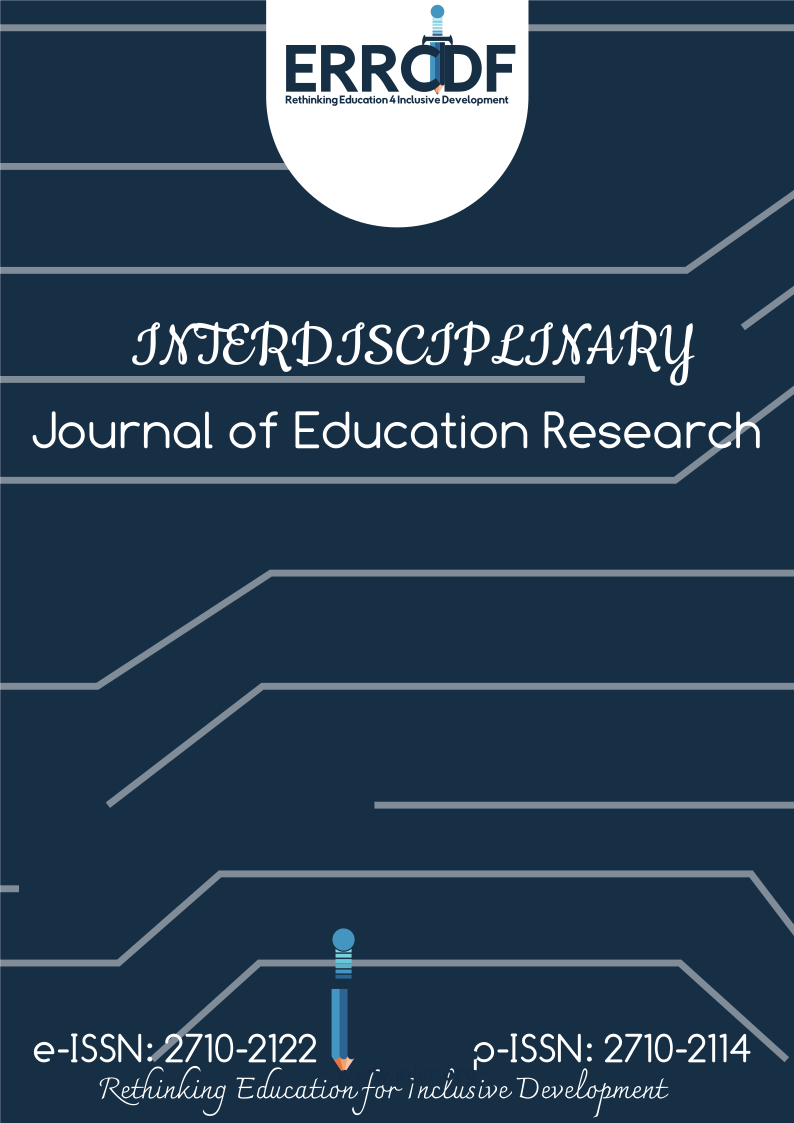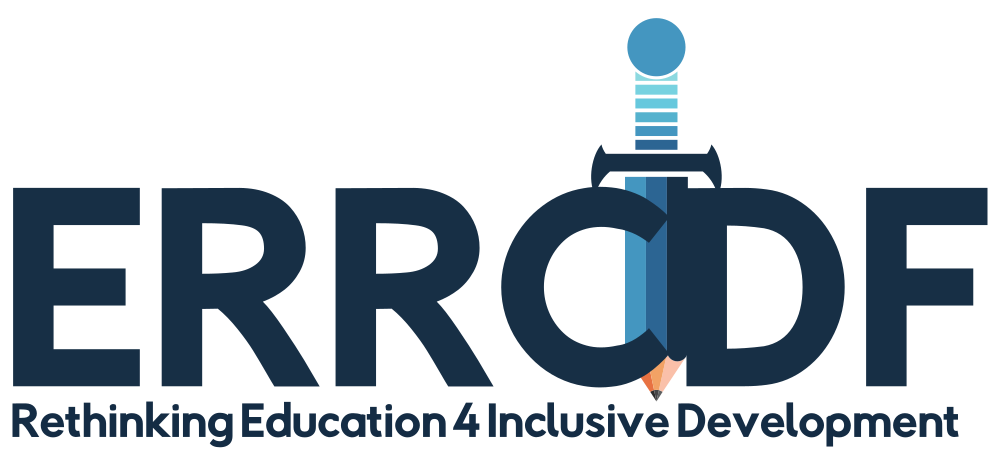Student perspectives on optimising AI tools to enhance personalised learning in higher education
DOI:
https://doi.org/10.38140/ijer-2024.vol6.s1.03Keywords:
Artificial intelligence, personalised learning, technology acceptance model, perceived usefulness, ease of useAbstract
This explanatory qualitative paper discusses students’ recommendations on how AI tools can be optimised to enhance personalised learning in higher education. There are several obstacles to the successful adoption and application of AI technology, two of which are user acceptance and striking a balance between AI-assisted and conventional teaching techniques. The Technology Acceptance Model is used in this research as a theoretical framework to analyse how users accept and use technology. It makes the case that users’ acceptance of technology is mostly influenced by their perceptions of its usefulness and ease of use, which can direct the creation of strategies to enhance the application and efficacy of AI technologies in individualised learning. Open-ended questionnaires were given to 40 University of the Free State students from different faculties as part of a qualitative explanatory case study methodology. The findings reveal that both students and lecturers need to be trained in using AI tools and that there should be a balance between using AI tools and traditional teaching methods to enhance personalised learning in higher education. Considering the findings, the study suggests that institutions and lecturers need to address the challenges posed by AI tools immediately and leverage AI to its full potential in creating an effective and personalised learning environment by establishing clear ethical guidelines and policies for AI usage in higher education and implementing comprehensive AI literacy programs for lecturers and students to ensure they understand the capabilities, limitations, and ethical considerations of AI tools.
References
Abbas, N., Ali, I., Manzoor, R., Hussain, T., & Hussaini, M. H. A. (2023). Role of artificial intelligence tools in enhancing students' educational performance at higher levels. Journal of Artificial Intelligence, Machine Learning and Neural Network, 3(05), 36–49. https://doi.org/10.55529/jaimlnn.35.36.49
Bakti, I. K., Yarun, A., Syaifudin, M., & Syafaq, H. (2023). The Role of Artificial Intelligence in Education: A Systematic Literature Review. Jurnal Iqra': Kajian Ilmu Pendidikan, 8(2), 182-197. https://doi.org/10.25217/ji.v8i2.3194
Barakina, E. Y., Popova, A. V., Gorokhova, S. S., & Voskovskaya, A. S. (2021). Digital technologies and artificial intelligence technologies in education. European Journal of Contemporary Education, 10(2), 285–296.https://doi.org/10.13187/ejced.2021.2.285
Biundo-Stephan, S., Bercher, P., Geier, T., Müller, F., & Schattenberg, B. (2011). Advanced user assistance based on AI planning. Cognitive Systems Research, 12, 219–236. https://doi.org/10.1016/j.cogsys.2010.12.005
Braun, V., & Clarke, V. (2006). Using thematic analysis in psychology. Qualitative Research in Psychology, 3(2), 77–101. https://doi.org/10.1191/1478088706qp063oa
British Educational Research Association [BERA]. (2018). Ethical guidelines for educational research, fourth edition, London. https://www.bera.ac.uk/researchers-resources/publications/ethicalguidelines-for-educational-research-2018
Brown, M. E., & Dueñas, A. N. (2020). A medical science educator’s guide to selecting a research paradigm: building a basis for better research. Medical Science Educator, 30(1), 545-553. https://doi.org/10.1007/s40670-019-00898-
Creswell, J. W., & Poth, C. N. (2016). Qualitative Inquiry and Research Design: Choosing Among Five Approaches (4th ed.). Sage.
Creswell, J.W. and Creswell, J.D. (2018). Research design: Qualitative, quantitative, and mixed methods approaches. Sage, Los Angeles.
Davis, F. D. (1989). Perceived usefulness, perceived ease of use, and user acceptance of information technology. MIS quarterly, 319-340. https://www.jstor.org/stable/249008
Duncan, G., & Larson, I. (2012). Blended learning designs facilitated by new media technologies including e-simulations for pharmacy and other health sciences. In Professional education using e-simulations: Benefits of blended learning design (pp. 157-173). IGI Global.https://doi.org/10.4018/978-1-61350-189-4.CH010
Ertmer, P., & Ottenbreit-Leftwich, A. (2010). Teacher technology change. Journal of Research on Technology in Education, 42, 255–284. https://doi.org/10.1080/15391523.2010.10782551
Farias, J. S., & Resende, M. M. (2021). Impact of training on the implementation of a new electronic system and acceptance of new technologies in a federal institution of higher education. Revista de Administração da UFSM, 13, 773-791. https://doi.org/10.5902/1983465932624
Georgina, D. A., & Olson, M. R. (2008). Integration of technology in higher education: A review of faculty self-perceptions. The Internet and Higher Education, 11(1), 1-8. https://doi.org/10.1016/J.IHEDUC.2007.11.002
Hasibuan, R., & Azizah, A. (2023). Analysing the Potential of Artificial Intelligence (AI) in Personalizing Learning to Foster Creativity in Students. Enigma in Education, 1(1), 6-10. https://doi.org/10.61996/edu.v1i1.2
Joo, Y. J., Lee, H. W., & Ham, Y. (2014). Integrating user interface and personal innovativeness into the TAM for mobile learning in Cyber University. Journal of Computing in Higher Education, 26, 143–158. https://doi.org/10.1007/s12528-014-9081-2
Joy, E. H., & Garcia, F. E. (2000). Measuring learning effectiveness: A new look at no-significant-difference findings. Journal of Asynchronous Learning Networks, 4(1), 33-39. https://doi.org/10.24059/OLJ.V4I1.1909
Kasneci, E., Seßler, K., Küchemann, S., Bannert, M., Dementieva, D., Fischer, F., ... & Kasneci, G. (2023). ChatGPT for good? On opportunities and challenges of large language models for education. Learning and Individual Differences, 103, 102274. https://doi.org/10.1016/j.lindif.2023.102274
Lincoln, Y. S., & Guba, E. G. (1985). Naturalistic Inquiry. Sage Publications.
Meydan, C. H., & Akka?, H. (2024). The Role of Triangulation in Qualitative Research: Converging Perspectives. In Principles of Conducting Qualitative Research in Multicultural Settings (pp. 98-129). IGI Global.
McInnes, R., Carandang, M., & Kulkarni, A. (2023). Unleashing the power of gen-AI for digital education development. ASCILITE Publications. https://doi.org/10.14742/apubs.2023.520
Meisuri, M., Nuswantoro, P., Mardikawati, B., & Judijanto, L. (2023). Technology Revolution in Learning: Building the Future of Education. Journal of Social Science Utilizing Technology, 1(4), 214-226. https://doi.org/10.55849/jssut.v1i4.660
Merriam, S. B., & Tisdell, E. J. (2015). Qualitative Research: A Guide to Design and Implementation (4th ed.). Wiley.
Oigara, J. N. (2013). Integrating technology in teacher education programs. In Research perspectives and best practices in educational technology integration (pp. 28-43). IGI Global. https://doi.org/10.4018/978-1-4666-2988-2.CH002
Onwuegbuzie, A. J., & Collins, K. M. (2007). A typology of mixed methods sampling designs in social science research. Qualitative report, 12(2), 281-316.Ouyang, F., & Jiao, P. (2021). Artificial intelligence in education: The three paradigms. Computers and Education: Artificial Intelligence, 2, 100020. https://doi.org/10.1016/j.caeai.2021.100020
Ouyang, F., Zheng, L., & Jiao, P. (2022). Artificial intelligence in online higher education: A systematic review of empirical research from 2011 to 2020. Education and Information Technologies, 27(6), 7893-7925. https://doi.org/10.1007/s10639-022-10925-9
Palinkas, L. A., Horwitz, S. M., Green, C. A., Wisdom, J. P., Duan, N., & Hoagwood, K. (2015). Purposeful sampling for qualitative data collection and analysis in mixed method implementation research. Administration and Policy in Mental Health and Mental Health Services Research, 42(5), 533–544. https://doi.org/10.1007/s10488-013-0528-y
Panda, S., & Kaur, N. (2023). Enhancing user experience and accessibility in digital libraries through emerging technologies. In K. P. Sinhamahapatra et al. (Eds.), Digital libraries: Sustainable development in education (pp. 676–703). Indian Institute of Technology Kharagpur. https://doi.org/10.5281/zenodo.10211088
Patel, S., & Ragolane, M. (2024). The implementation of artificial intelligence in South African higher education institutions: Opportunities and challenges. Technium Education and Humanities, 9, 51-65. https://doi.org/10.47577/teh.v9i.11452
Phaladi, M. G., Mashwama, X. N., Thwala, W. D., & Aigbavboa, C. O. (2022). A Theoretical Assessment on the Implementation of Artificial Intelligence (AI) for an Improved Learning Curve on Construction in South Africa. In IOP Conference Series: Materials Science and Engineering (Vol. 1218, No. 1, p. 012003). IOP Publishing. https://doi.org/10.1088/1757-899X/1218/1/012003
Rakya, Z. H. (2023). Exploring the impact of artificial intelligence (AI) on learner-instructor interaction in online learning (Literature Review). International Journal of Emerging Multidisciplinary: Computer Science & Artificial Intelligence, 2(1), 1-14. https://doi.org/10.54938/ijemdcsai.2023.02.1.236
Sadiku, M. N., Musa, S. M., & Chukwu, U. C. (2022). Artificial intelligence in education. iUniverse.
Santos, K. D. S., Ribeiro, M. C., Queiroga, D. E. U. D., Silva, I. A. P. D., & Ferreira, S. M. S. (2020). The use of multiple triangulations as a validation strategy in a qualitative study. Ciência & saúde coletiva, 25, 655-664.
Schmidt, P., Biessmann, F., & Teubner, T. (2020). Transparency and trust in artificial intelligence systems. Journal of Decision Systems, 29,260–278. https://doi.org/10.1080/12460125.2020.1819094
Sickel, J. (2019). The great media debate and TPACK: A multidisciplinary examination of the role of technology in teaching and learning. Journal of Research on Technology in Education, 51, 152–165. https://doi.org/10.1080/15391523.2018.1564895
Siregar, S. D., Panjaitan, B., Girsang, E., & Dabukke, H. (2019). Learning Media Using Discovery Learning Approach to Improve Student Learning Outcomes. Jurnal Pendidikan Fisika, 8(2), 120-125. https://doi.org/10.22611/JPF.V8I2.15195
Tomsett, R., Preece, A., Braines, D., Cerutti, F., Chakraborty, S., Srivastava, M., ... & Kaplan, L. (2020). Rapid trust calibration through interpretable and uncertainty-aware AI. Patterns, 1(4), 100049. https://doi.org/10.1016/j.patter.2020.100049
Wark, N., & Ally, M. (2020). An emergent pedagogical framework for integrating emergent technologies into curriculum design. Emerging Technologies and Pedagogies in the Curriculum, 89–111. https://doi.org/10.1007/978-981-15-0618-5_6
Yin, R. K. (2009). Case study research: Design and methods (Vol. 5). sage.
Zhang, L., Basham, J., & Yang, S. (2020). Understanding the implementation of personalised learning: A research synthesis. Educational Research Review, 31, 100339. https://doi.org/10.1016/j.edurev.2020.100339
Zhou, X., Zhang, J., & Chan, C. (2024). Unveiling students’ experiences and perceptions of Artificial Intelligence usage in higher education. Journal of University Teaching and Learning Practice, 21(6), 1–20. http://dx.doi.org/10.53761/xzjprb23
Downloads
Published
How to Cite
Issue
Section
License
Copyright (c) 2024 Lebohang Mulaudzi, Joleen Hamilton

This work is licensed under a Creative Commons Attribution 4.0 International License.










